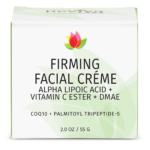Soap
The missing ingredient in most hair and skin cleansing products (which contain harsh, synthetic, non-biodegradable detergents). Soap is made by saponifying fats with salts, and it is the natural way to clean the body. SInce the FDA does not require the ingredients listing on soaps, it is difficult to know exactly what is in them, so buy from a manufacturer you trust.
Soap is a salt of a fatty acid used in a variety of cleansing and lubricating products. In a domestic setting, soaps are surfactants usually used for washing, bathing, and other types of housekeeping. In industrial settings, soaps are used as thickeners, components of some lubricants, and precursors to catalysts.


When used for cleaning, soap solubilizes particles and grime, which can then be separated from the article being cleaned. In hand washing, as a surfactant, when lathered with a little water, soap kills microorganisms by disorganizing their membrane lipid bilayer and denaturing their proteins. It also emulsifies oils, enabling them to be carried away by running water.
Soap is created by mixing fats and oils with a base. A similar process is used for making detergent which is also created by combining chemical compounds in a mixer.
Humans have used soap for millennia. Evidence exists for the production of soap-like materials in ancient Babylon around 2800 BC.










